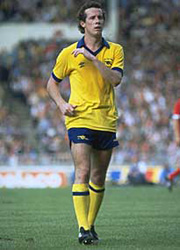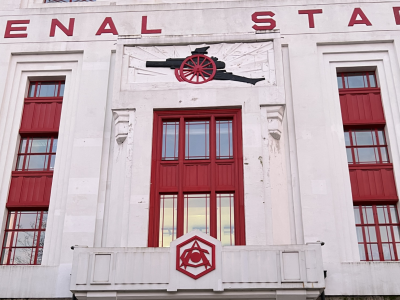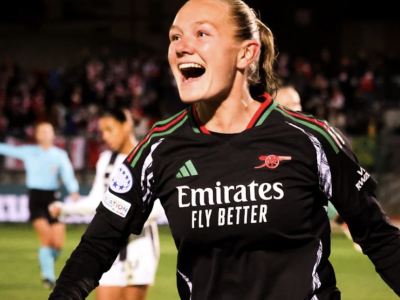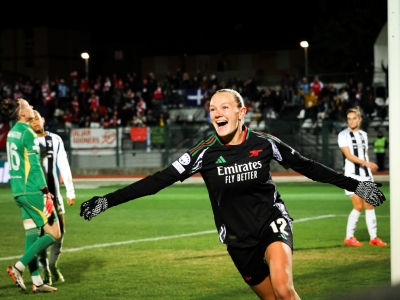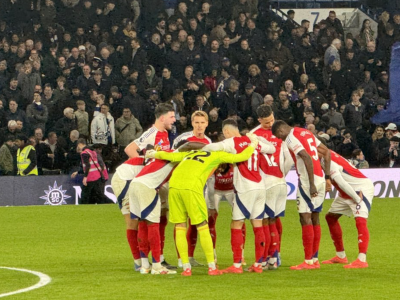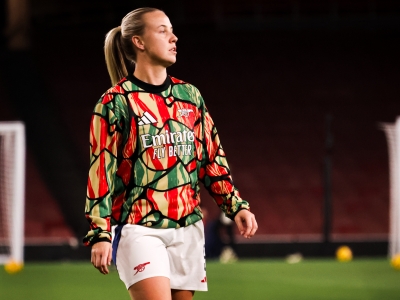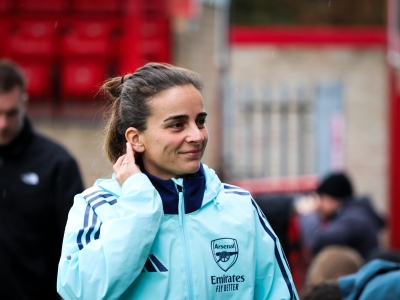In an era when the importance of league finishing-positions has grown enormously in comparison to that of Domestic Cup wins or Final appearances, it’s easy to forget, or certainly to underplay, the kudos which Arsenal had enjoyed toward the end of the 1970s as the premier domestic Cup outfit in English Football.
The FA Cup Final win of 1979, more for the final five minutes, as opposed to the rather one-sided and, on the whole, uneventful 85 minutes that preceded them, is often cited as one of the most memorable Wembley Finals of all time. To many, it may well have been viewed as the start of something big; even Terry Neill had dared to talk of challenging for the title in 1979/80. However, as stated by Jon Spurling in ‘All Guns Blazing’, his account of Arsenal in the 1980s, ‘the '79 Cup Final, while appearing to be a new dawn for the Gunners, was in some way the sign of ‘fin de regime’’. Brady had announced not long after the 1979 FA Cup Final victory that the 1979/80 season would be his last in an Arsenal shirt, tempted as he was by the lure of the Lira and furthering his footballing education overseas.
He later stated that ‘I wanted to sample life and football abroad and I wasn’t prepared to wait any longer. '79-80 was a time when I did feel unsettled. I’d said at the start of the season that I wanted to leave. All in all, I think it was the right decision to announce it rather than drag it all out, but there were a few disgruntled individuals who voiced their opinions about my departure. To be fair, that was to be expected. It was a minority, but I noticed it’. On top of that bombshell came the premature retirement of Malcolm MacDonald, the club’s top scorer for two of the previous three seasons, in August 1979.
Having suffered a knee injury in a League Cup tie against Rotherham just four games into the 1978/79 season, MacDonald did not return until the last game of that season, two days after the FA Cup Final against Chelsea at Stamford Bridge, scoring Arsenal’s only goal in a 1-1 draw. He was sent on loan over the summer to Swedish side Djurgarden, to regain his fitness for the coming season, playing nine times and bagging two goals. However the writing was on the wall for Super Mac’s playing career. In the close season, Arsenal were linked with Bryan Robson, Mark Lawrenson and Johan Neeskens. The only addition to the side, however, was a 33-year-old John Hollins signed from a relegated Chelsea side.
The first test for Arsenal’s title-challenging pretentions was to come against the reigning League Champions themselves, Liverpool, in the Charity Shield. Arsenal were on the receiving end of a rampant Liverpool side in a 1-3 Wembley defeat. Their league campaign had started promisingly enough with a 4-0 win away at Brighton, but after twelve games they were lying as low as twelfth position, with just three wins to their name. Defeats such as 0-1 away to Terry Venables’ Crystal Palace in November, and title-challenging Manchester United in the final league fixture of 1979, left Arsenal eight points off the top of the table by the turn of the year. As Jon Spurling had stated, ‘with a lack of depth within the squad, the club’s bold August title-promises were mere illusions’.
Again, it was to be the Cup competitions where Arsenal were to thrive. In the first round of the League Cup, Arsenal were drawn against Leeds United, who were still to some degree prominent in the post-Revie era, finishing above seventh-placed Arsenal in fifth position the season prior. The first leg ended 1-1 at Elland Road, followed by the same score-line in the league three days later. The following Wednesday came the second leg at Highbury, where Leeds were trounced 7-0 with an Alan Sunderland hat-trick, two penalties from Brady, as well as Sammy Nelson and Frank Stapleton getting on the score sheet. There followed victories against the previous season’s runners-up Southampton, and then Brighton in the third and fourth rounds, before being drawn against third-tier Swindon Town a decade on from their famous League Cup Final win over Arsenal at Wembley.
The first game had ended 1-1 at Highbury, followed by a replay at the County Ground a week later. Arsenal had trailed 0-2 with own goals from Steve Walford and John Hollins. Brady, Arsenal’s man of the match, had almost singlehandedly brought Arsenal back into the game scoring with a diving header, before future Sky pundit Chris Kamara restored Swindon’s lead. A further Brady goal, followed by an assist for Brian Talbot’s equaliser, took the game to extra-time; however, a late Swindon winner from Andy Rowland four minutes from the end of extra time meant an embarrassing 3-4 defeat for Arsenal. The Gunners were to fare better in Europe, beating Fenerbahce 2-0 on aggregate in the first leg, followed by a tough encounter with East German side FC Magdeburg in the second round. At Highbury, Arsenal took a slender 2-1 lead in the first leg with goals from Willie Young and Alan Sunderland. In the away leg, Arsenal held off the spirited East German side with a 2-2 draw with goals from David Price and Liam Brady to put the Arsenal into the last eight of the competition.
In the New Year, Arsenal kicked off their defence of the FA Cup with a 2-1 replay win over Cardiff, followed by a 2-0 win over Brighton in the fourth round. Back in the League, they were beginning to build an impressive run of results which included a 3-1 win over Aston Villa and a 2-0 win over Bolton three days after disposing of them in a fifth Round FA Cup Replay in the month of February. They were also to remain unbeaten in all competitions throughout the month of March, seeing off Graham Taylor’s Watford in the FA Cup Quarter Finals with a 2-1 victory, as well as Swedish side IFK Gothenburg 5-1 on aggregate in the Cup Winners Cup.
Arsenal were to lose only one league game between New Years’ Day and the FA Cup Final – a 1-2 defeat away at Norwich at the start of April. This run was, however, to include five draws, as the side were quite obviously distracted by their two Cup runs in the FA Cup and the European Cup Winners Cup. The first signs of fixture congestion came in early April with the then standard two-game Easter Weekend, as well as the first leg of the Cup Winners Cup Semi-Final against Juventus. Arsenal were to play three times in five days, which included the North London Derby at White Hart Lane on Easter Monday. Tottenham had rejected Arsenal’s request to postpone the match to alleviate fixture congestion and Arsenal faced the wrath of the Football League for fielding an under-strength side minus six first-team regulars. Spurs, however, got their come-uppance as Arsenal ran out 2-1 winners at the Lane with goals from Paul Vaessen and Alan Sunderland.. As David O’Leary stated ‘Spurs were sick. We thought it served them right’.
48 hours later, it was back to Highbury for Juve, and this time it was O’Leary in the sick bay, stretchered off as a result of a two-footed lunge from Roberto Battega. Juve took the lead through Cabrini scoring from a rebound after Pat Jennings saved the initial penalty. Juve, however, were later reduced to ten men after Marco Tardelli had taken out Liam Brady. Arsenal, though, equalised with five minutes left as Battega put through his own net, the game ending 1-1. Three days later, it was on to Hillsborough for the marathon FA Cup Semi-Final with league-leaders Liverpool, these being the days before FA Cup ties were settled by penalties after one replay.
It was also the days before televised Semi-Finals. The only way for avid fans to keep up with this saga was through match attendance. As John Spurling states in ‘All Guns Blazing’, ‘How many zombified workers must there have been in various London warehouses and offices, obsessed by this particular soap opera, their mental sharpness destroyed due to hours of motorway travel?’ The first Semi-Final encounter had ended 0-0; the following Wednesday David Fairclough gave Liverpool the lead, only for Alan Sunderland to equalise. Incredibly, the two sides had to meet again in the league the following Saturday at Anfield. Liverpool were going toe to toe with Manchester United for the title they would eventually win, but a 1-1 draw with Arsenal reduced their lead at the top to just one point.
A trip to Turin for the second leg of the Cup Winners Cup Semi-Final was not much of a welcome break for the Arsenal from the on-going Liverpool saga, considering that no side had beaten Juventus at home in Europe for over a decade. The return leg however did bring positive results, as Arsenal eventually broke the deadlock after 88 minutes with a goal from Paul Vaessen which stunned 66,000 Italians into deafening silence. After pulling off such a triumph, however, there was little time for Arsenal to bask in glory. Three days later, a tough encounter against Ron Atkinson’s West Brom at Highbury ended 1-1, then back to the on-going Liverpool saga 48 hours later for the second replay at Villa Park. Alan Sunderland gave Arsenal the lead after just 13 seconds only to be cancelled out by Kenny Dalglish’s equaliser deep into injury-time.
By this point, the tie had become – and remained - the longest-running Semi-Final of the twentieth century. On Thursday May 1st at Highfield Road in Coventry, the saga was finally put to bed. David Fairclough of Liverpool would later reveal that Bob Paisley’s advice to his players before each tie had been ‘You’ll have to keep an eye out for the boy Osborne coming late on the scene…. You know, the lad from Ipswich’. Bob, of course, had actually meant Brian Talbot, who actually did settle the third replay with a headed goal, just nine days before the FA Cup Final had been scheduled. However, within those nine days, another two league fixtures were also to be played.
First off on the final Saturday of the season was Coventry away, just two days after Arsenal’s heroics on the very same ground. Arsenal took both points through a Paul Vaessen goal. Then on the May Day bank holiday, another 48 hours on, Arsenal were to play Brian Clough’s European Cup Finalists Nottingham Forest at Highbury in a game which ended goalless. Even though the Sunday Times’ description of the disparity between the two Cup Final sides had been that West Ham were ‘so much the underdog that there was a danger of somebody calling in the RSPCA’, the five days’ respite between that fixture and the FA Cup Final against second-tier West Ham was not nearly enough recuperation.
In the Final itself, West Ham, whose nine days prior to the final included games against second-tier relegation candidates Bristol Rovers and Charlton Athletic, were sharper and fitter than their London rivals. On a boiling hot Wembley day, the Hammers took a first-half lead from an unlikely Trevor Brooking header. David O’Leary told in his autobiography that ‘at half time, Don (Howe) came into the dressing room and ordered ‘get yourselves under the showers, for god’s sake wake yourselves up’. It was no good, we were gone’. And so too was the FA Cup.
Just four days on, and it was on to the ill-fated Heysel Stadium for the European Cup Winners Cup Final against Valencia – a side who boasted Argentine World Cup winner Mario Kempes, but, in all, a much weaker side than the Juventus team Arsenal had disposed of in the Semi-Final. The final went all the way to a penalty shoot-out, when Liam Brady had failed to capitalise on Jennings’s save from Kempes, missing from the spot. All other penalty takers from both sides had converted, taking the shoot-out all the way to sudden death, until Graham Rix had missed the deciding penalty at 4-5 to Valencia..
Incredibly, there were two further league fixtures to play after the Cup Winners Cup Final defeat, and neither had Arsenal the luxury of deeming them to be meaningless fixtures. Arsenal lay in fourth place after 40 matches, which in any other season would have meant qualification for Europe. Due to UEFA co-efficient rankings, however, only three berths were available to English sides in the UEFA Cup for the 1980/81 season. This might be considered an odd decision seeing that English sides practically owned the European Cup during the late '70s and early '80s; however, English sides’ performances in the UEFA Cup itself were not so dominating during this very period. Three points above Arsenal in third place were Ipswich Town. Under the two-points-for-a-win system, this had meant that Arsenal were required to take full points in both matches in order to qualify for the UEFA Cup.
Just 48 hours after the Cup Winners Cup Final defeat, on a Friday evening Arsenal were required to pick themselves up to get a result away at Wolves. They won 2-1 at Molineux, with goals from Frank Stapleton and Steve Walford. Three days later it was on to Ayresome Park to play ninth-placed Middlesbrough for Arsenal’s seventieth fixture of the season. The Arsenal side were pretty much dead on their feet, and crashed to a 0-5 defeat with two goals from the prematurely-balding David Armstrong and future Liverpool stars David Hodgson and the Australian Craig Johnston. It was to be the final appearances for Pat Rice, Sammy Nelson and - more importantly – Liam Brady.
Arsenal’s final wage-offer to Brady in the close season of 1980 would have made him the highest-paid footballer in English Football at the time. It was, however, not enough to persuade him to stay. Brady became a free agent and left for Juventus on 1st August 1980. The fee had been the maximum permitted by UEFA and the EEC for international transfers - £600,000. Twelve months on, Arsenal had also lost Frank Stapleton to Manchester United for just £900,000. Arsenal had lost their two most influential players within 12 months of each other for a combined figure that one could easily define as paltry considering that the transfer record at that point stood at the figure of £1.45 million which Manchester City had paid for Steve Daley. As a result, it was to be another seven years before Arsenal were to be able to sustain a credible challenge for trophies once more. In May, 1980 it wasn’t quite ‘Fin De Regime’ in London N5, but it certainly was the beginning of the end. Neill was to remain in his position for another three and a half years, but his tenure would never match the achievements of the four-time finalists between 1978 and 1980.
*Follow me on Twitter@robert_exley

